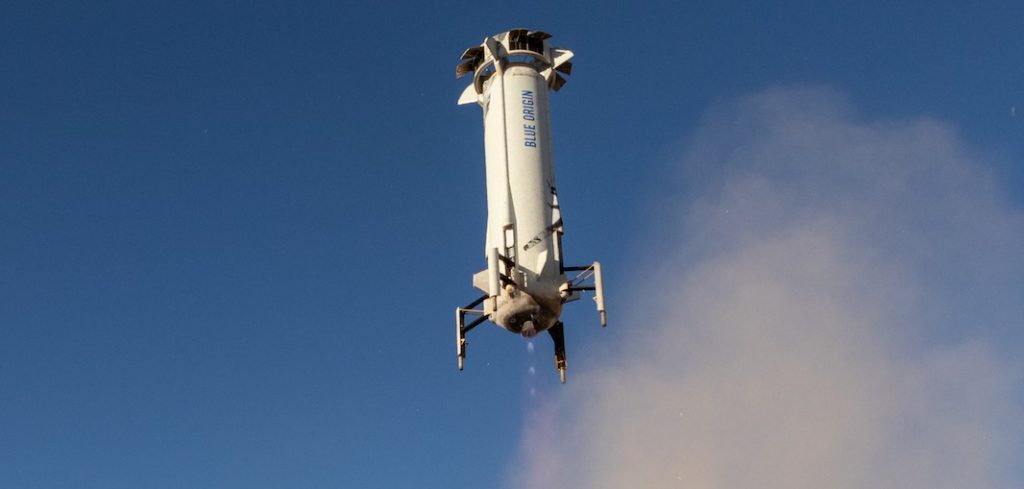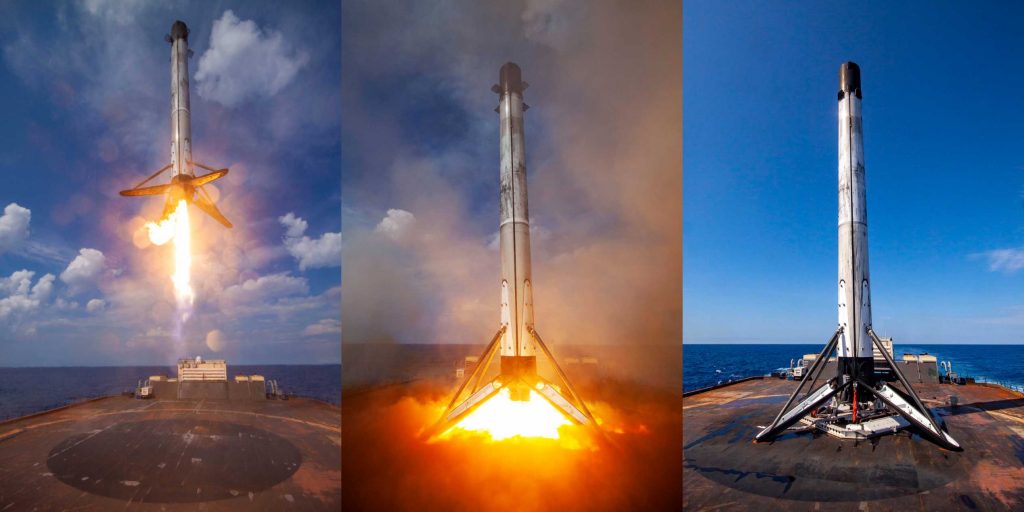15.10.2020

Prospective SpaceX competitor Blue Origin has completed a suborbital launch of its reusable New Shepard rocket for the first time in 10 months.
Originally designed to help usher in a new wave of space tourism as early as 2017, the tourist launch debut of the New Shepard rocket – alongside fellow tourism company Virgin Galactic’s SpaceShipTwo – appears destined to forever be “a couple flights” away.
Essentially the same diameter as SpaceX’s Falcon 9 rocket, New Shepard measures ~3.6m (~12 ft) wide, ~15m (~50 ft) tall, and likely weighs around 35 metric tons (~75,000 lb) at liftoff. The small rocket booster is powered by one liquid hydrogen and oxygen (hydrolox) BE-3 engine capable of producing ~500 kN (110,000 lbf) of thrust and is designed for what Blue Origin calls “operational reuse”.
In practice, Blue Origin has only built four New Shepards in ~6 years and has never flown the same booster twice in less than ~60 days, despite an effectively blank-check budget from owner Jeff Bezos since the company’s founding in 2000.


It’s truly difficult to fathom why, if New Shepard is capable of semi-rapid reuse, Blue Origin has only launched the small rocket an average of once every six months in the last four years. If the company genuinely wants to routinely launch space tourists above the Karman Line (100 km), actually demonstrating safety with as many consecutively successful launches as possible is a no-brainer given an effectively unlimited budget and schedule.
Put a different way, Blue Origin was technically founded two years before SpaceX. In the 6-7 years since Bezos’ space startup began building the first New Shepard, the company has built just four vehicles total, one of which was destroyed when it failed its first landing attempt. In that same timeframe, SpaceX has built ~50 Falcon 9 and Falcon Heavy boosters and completed 83 successful launches, only one of which was intentional suborbital.
In the ten months it has taken Blue Origin to complete two suborbital launches of the same New Shepard 3 booster, SpaceX has completed 18 Falcon 9 launches, orbited more than 600 self-built Starlink satellites, become the first private company in history to launch astronauts into orbit, shipped the first upgraded Cargo Dragon spacecraft to Florida, landed a booster after a satellite launch for the US military, beat NASA’s Space Shuttle to make Falcon 9 the world’s most rapidly reusable rocket, completed six orbital-class launches with the same Falcon booster, performed two successful Starship hop tests, crushed a decades-old world record with a Raptor engine, and much, much more.

ULA’s Vulcan, Blue Origin’s New Glenn, and SpaceX’s Starship. (ULA/Blue Origin/SpaceX)

While Blue Origin is technically working on New Glenn – a massive orbital-class reusable rocket with performance similar to Falcon Heavy – and the powerful BE-4 engine, mean to power both New Glenn and ULA’s new Vulcan rocket, both appear to be in the throes of technical difficulties and delays. During Blue Origin’s official New Shepard Flight 13 (NS-13) webcast, the company didn’t mention either program once.
Quelle: TESLARATI
